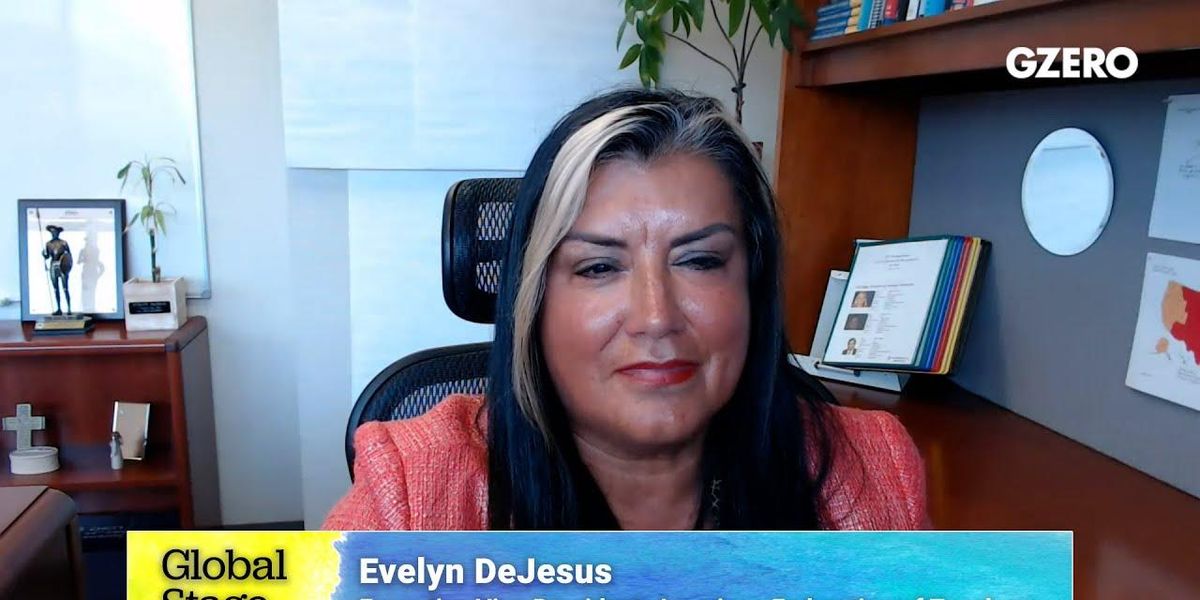Trending Now
We have updated our Privacy Policy and Terms of Use for Eurasia Group and its affiliates, including GZERO Media, to clarify the types of data we collect, how we collect it, how we use data and with whom we share data. By using our website you consent to our Terms and Conditions and Privacy Policy, including the transfer of your personal data to the United States from your country of residence, and our use of cookies described in our Cookie Policy.
{{ subpage.title }}
COVID's impact on education and its long-term geopolitical consequences: Gerald Butts
It's not just kids spending too much time on their screens because they got so used to doing everything remotely during the pandemic.
The impact of COVID-related educational disruption - and the growing inequality gap - could have big geopolitical fallout in the future. Why?
Because with diminished education comes fewer economic opportunities. That will likely exacerbate already deep divisions, says Eurasia Group Vice Chairman Gerald Butts.
As a result, he adds, watch out for more future disrupted politics around the world, both within countries and between countries.
Butts spoke during a Global Stage livestream on September 15, 2022: "Live from the UN General Assembly: Transforming Education"
- How to get students back on track after the Great Education ... ›
- Education's digital revolution: why UN Secretary-General António ... ›
- Eurasia Group's Gerald Butts: US climate change debate has moved ... ›
- Europe plans for Putin & Trump 2.0 - GZERO Media ›
- Overcoming inefficiency with education - GZERO Media ›
- 2022 has been rough. Will 2023 be any better? - GZERO Media ›
- Eddie Ndopu: "People with disabilities need to be in leadership" - GZERO Media ›
Post-COVID burnout for students is real, says US teachers union exec
It's hard to overstate how awful the pandemic was for children in America.
American Federation of Teachers Executive VP Evelyn DeJesus recalls how bad it got in New York City, where kids experienced the fear of their parents, who in turn worried about how COVID disrupted life and schooling for their children.
It's not about in-person vs. remote learning. There's no substitute for the former.
Still, she says during a Global Stage livestream conversation, teachers and parents worked very hard during that time. Their burnout is real, as is that of their kids.
The solution moving forward? "Build up" children so they are better prepared to succeed in school — and in life.
- Teaching kids about vaccines: Don Brown's "A Shot In The Arm ... ›
- How education has improved women's lives around the world ... ›
- Stanford President Marc-Tessier Lavigne: The future of in-person ... ›
- Don't jump out the omicron window - GZERO Media ›
- Overcoming inefficiency with education - GZERO Media ›
Stanford President Marc-Tessier Lavigne: The future of in-person college learning
"I think that we can make education much more accessible while still highlighting the value of an in-person Stanford education" Stanford University president Marc Tessier Lavigne told Ian Bremmer. It will be the job of administrators, says Tessier-Lavigne, to determine how best to apply the "highs" of remote learning to a post-pandemic learning experience.
The global disruption in the education sector
This week, Ian Bremmer looks at how one affluent community in Chile sounded the alarm on in-person education in the COVID age long before the American academic school year started up this fall.
Watch the GZERO World with Ian Bremmer episode, Stanford's president: College in the COVID age
Stanford's president on the “new normal” for higher education after COVID
Certain adjustments that universities across the country made because of the pandemic may very well be here to stay. A vast expansion of the use of telehealth, says Stanford University president Marc Tessier-Lavine, may be one of those things. And even once students can come back to campus, certain remote learning programs may be here to stay. That said, there's no replacing the in-person experience, Tessier-Lavigne stresses.
Three steps to get remote & hybrid learning right
Kevin Sneader, global managing partner for McKinsey & Company, provides perspective on how corporate business leaders think in response to the coronavirus crisis:
How do we get remote and hybrid learning right?
For many, this is the back to school season. But this year's preparations are fraught with added anxiety as educators, public health officials, and parents try to balance the need to reduce the spread of the virus with a desire to get students into more productive learning environments. For many students, a full time return to the classroom will not be safe for some time. It's important to understand three lessons in order to get remote and hybrid learning right.
The first lesson, differentiate by the level of need and capabilities. Educators have long understood the value of tailoring curriculums and environments to the needs of different groups. Well, that's particularly important these days. The key is to ensure, therefore, that resources are focused on students who experience the greatest challenges, such as learning disabilities, economic hardship, or an unstable home environment.
Lesson two, design systems specifically for remote and hybrid environments. Remote and hybrid learning are more than just digital versions of the classroom. When the coronavirus first hit, we didn't really have the time to redesign better solutions, solutions that improve the way that teachers interact with students and reflect the need to shift under different conditions. Now we can.
Lesson three, relationships are the foundation of learning. Schools are more than places for learning alone. They are the center of their communities. So now, as students return to the classroom and to hybrid learning, it is important to take stock of academic status, but also to reflect on ways to rebuild the role of the school in the community.





